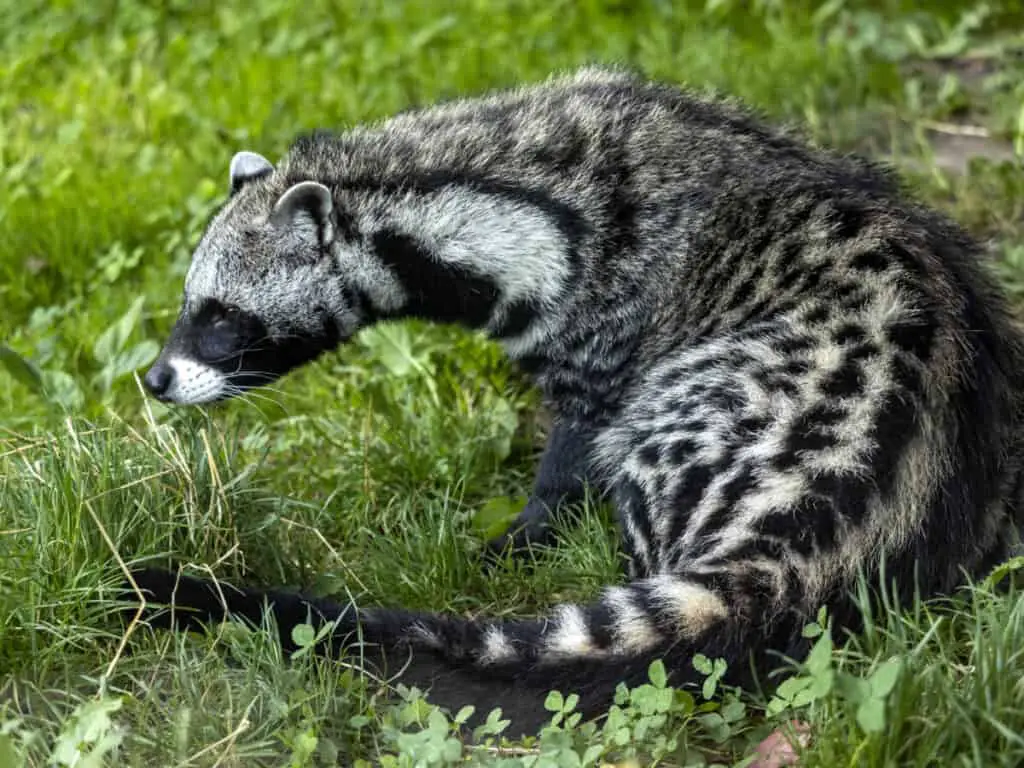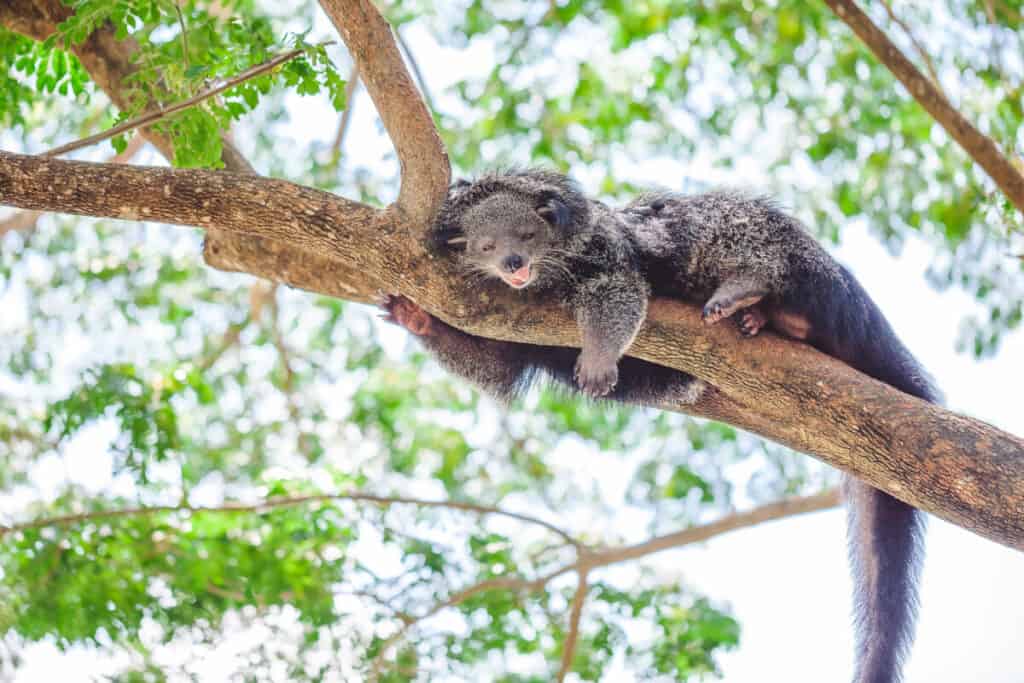Infraorder Viverroidea is a diverse and fascinating group of mammals, encompassing several families that are found throughout the world. Members of this infraorder range in size from small insectivores to large carnivores, and occupy a wide variety of habitats including forests, grasslands, deserts, and aquatic environments.
One of the most distinctive features of Infraorder Viverroidea is their dentition. Most members possess sharp teeth adapted for catching and consuming prey, although some have evolved specialized diets such as fruit or nectar feeding.
Despite their diversity, many species within this group face threats such as habitat loss, poaching, and climate change. As wildlife biologists and conservationists specializing in the study of Infraorder Viverroidea, it is our responsibility to protect these animals and ensure they continue to thrive in their respective ecosystems.

Overview Of Infraorder Viverroidea
Infraorder Viverroidea is a diverse group of mammals that includes various species of carnivores. This group has been extensively studied by experts in the field, who have contributed significantly to our understanding of its evolutionary history and phylogenetic relationships.
The fossil record suggests that viverroids first appeared during the early Eocene epoch, around 56 million years ago.
Phylogenetic analyses reveal that infraorder Viverroidea is closely related to other mammalian groups such as Feliformia (cats) and Caniformia (dogs). However, it also shows some distinctive features that set it apart from these groups.
For example, many members of this clade have elongated bodies with short legs, which make them highly adapted for hunting small prey. Furthermore, they possess specialized dental adaptations that allow them to consume a wide range of food types.
Overall, infraorder Viverroidea represents an important branch in the mammalian tree of life and provides valuable insights into the evolution of terrestrial carnivores.
Diversity Of Families And Habitats
After delving into the overall characteristics of infraorder viverroidea, it is fascinating to explore the diversity of families and habitats that these animals occupy.
The sheer number of species within this group is astounding, with each family having its unique set of physical features and behaviors.
Habitat preferences are diverse among different families in infraorder viverroidea. Some species prefer dense forests, while others thrive in open grasslands or rocky terrain.
Additionally, some members have adapted to live close to human settlements and rely on anthropogenic resources for survival. Geographic distribution also varies greatly; certain families are restricted to specific regions such as Southeast Asia or Africa, whereas others can be found across multiple continents.
Understanding the habitat requirements and range limits of each family is crucial for their conservation management plan.
Dentition Adaptations For Prey Capture
Dentition adaptations for prey capture are crucial for the survival of predators within the infraorder Viverroidea. These adaptations have evolved over time to provide more effective means of capturing and consuming prey, which has given these animals a significant evolutionary advantage.
Comparative analysis between different species within Viverroidea reveals distinct differences in dentition based on their preferred diets. For example, some species such as the fossa (Cryptoprocta ferox) have sharp teeth designed for gripping and tearing flesh, while others such as genets (Genetta spp.) possess smaller teeth suited for crushing small insects that make up a bulk of their diet.
The ability to adapt to various food sources through dental modifications is an essential trait that has allowed many viverroids to survive in diverse ecosystems across multiple continents.
The evolutionary significance of dentition adaptations cannot be overstated when it comes to understanding predator-prey relationships within this group. As with any ecosystem, there is a delicate balance at play where subtle changes can lead to major impacts on populations both above and below in the food chain.
By studying the diversity of dentition among viverroids, we gain insight into how they interact with other organisms in their environment and ultimately contribute towards maintaining ecological stability.
Through comparative analysis, we see how even minor variations in tooth structure can greatly influence feeding habits and success rates among different species; emphasizing once again the importance of learning from nature’s design principles rather than attempting to impose our own solutions onto complex problems.
The Fossa’s Predators Revealed: Unmasking the Threats
Specialized Diets Among Members
Members of the infraorder Viverroidea possess a wide range of carnivorous habits and specialized diets. These mammals are known to consume a variety of prey, including insects, rodents, birds, reptiles, and even other small carnivores. The nutritional requirements of these animals vary depending on their size, activity levels, and specific dietary needs.
Some species within Viverroidea have evolved unique adaptations that allow them to specialize in particular types of prey. For example, some members have elongated snouts or sharp teeth designed for cracking open hard-shelled insects or crushing bones. Others rely heavily on hunting smaller prey items due to limitations in their physical capabilities. Understanding the diverse feeding strategies among these animals is crucial for developing effective conservation management plans that ensure adequate resources are available to sustain populations over time.
| Species | Dietary Habits | Prey Items Consumed | Nutritional Requirements |
|---|---|---|---|
| Genet (Genetta spp.) | Omnivorous/Carnivorous | Insects, Rodents, Birds, Reptiles | High Protein/Fat Requirements |
| Civets (Viverra spp.) | Carnivorous/Omnivorous | Small Mammals/Insects/Birds | High Fat Content Required |
| Mongooses (Herpestidae) | Carnivorous/Omnivorous | Snakes/Small Mammals/Lizards/Insects | Balanced Diet w/ Calcium & Iron |
Overall, it is clear that members of the infraorder Viverroidea exhibit a vast array of specialized diets and carnivorous habits. While all require high protein sources to meet their energy demands as predators, each has its own unique set of nutritional requirements necessary for survival. As such, continued research into diet preferences and nutrient intake will be important for ensuring successful conservation efforts aimed at maintaining healthy populations of these fascinating animals in the wild.

Threats To Infraorder Viverroidea
After discussing the specialized diets among members of infraorder viverroidea, it is ironic to note that despite their adaptability and resilience, they face significant threats in their natural habitats. The increasing human population has led to habitat destruction, which has resulted in a loss of suitable living spaces for these animals.
Additionally, poaching pressures have been on the rise as various body parts are believed to hold medicinal properties. As a wildlife biologist/conservationist specializing in infraorder viverroidea, it is essential to recognize the severity of these threats and take action towards conservation efforts.
Here are five critical points regarding threats faced by this order:
- Habitat destruction due to deforestation and urbanization
- Poaching pressure for traditional medicines
- Climate change leading to unpredictable weather patterns
- Competition with invasive species
- Roadkill incidents due to increased road networks
It is imperative that we understand the impact our actions can have on these creatures and work towards sustainable solutions that would ensure their survival. It will require collaborative efforts from governments, local communities, and relevant stakeholders who must come together to protect these unique animals before it’s too late.
Conservation Efforts To Protect These Animals
Infraorder viverroidea encompasses a diverse group of carnivorous mammals, many of which are threatened by habitat loss, poaching and human-wildlife conflicts. Conservation efforts to protect these animals have been underway for several years now with the aim of reversing their declining populations. Collaborative initiatives between conservation organizations, governments and local communities have been key in achieving this goal.
One such initiative is the creation of protected areas that serve as sanctuaries for Viverroids. These parks not only provide safe habitats but also help in educating visitors on the importance of conserving biodiversity. Additionally, public awareness campaigns play a crucial role in sensitizing people about the plight of Viverroids and how they can contribute towards their protection through sustainable practices like responsible tourism and supporting community-based conservation projects.
| Conservation Initiative | Objective |
|---|---|
| Creation of Protected Areas | Provide Safe Habitats |
| Educate Visitors | |
| Public Awareness Campaigns | Sensitize People |
| Promote Sustainable Practices |
The above-mentioned measures highlight some of the ways we can work towards protecting Infraorder viverroidea members from extinction. However, it is important to note that there is still much work to be done if we are to ensure their long-term survival. By continuing to support collaborative conservation initiatives and raising public awareness about these incredible creatures, we can secure a future where they thrive alongside us in healthy ecosystems.
Conclusion
The Infraorder Viverroidea is a fascinating group of animals that includes over 100 species of carnivorous mammals. These creatures are found all over the world, from tropical rainforests to arid deserts, and they have adapted their dentition for efficient prey capture in diverse habitats.
Members of this infraorder exhibit specialized diets, with some feeding primarily on insects while others focus on larger prey like rodents or birds. However, despite their unique adaptations and ecological importance, many viverroids face threats such as habitat loss and fragmentation, hunting for fur or meat, and competition with invasive species.
Conservation efforts aimed at protecting these amazing animals include habitat restoration projects, implementing laws and policies to regulate hunting practices or trade in pelts, captive breeding programs for endangered species, and public education initiatives to raise awareness about the importance of biodiversity conservation.
By working collaboratively across sectors and regions, we can ensure a secure future for the Infraorder Viverroidea and other threatened wildlife around the globe.
In conclusion, let us not underestimate the value of these incredible creatures within our ecosystems. While often overshadowed by more charismatic megafauna such as tigers or elephants , it is important to recognize that every organism plays its part in maintaining balance within nature’s complex web.
The Infraorder Viverroidea may be small in stature but should never be overlooked when considering the bigger picture of global biodiversity conservation efforts. So why not take a moment today to appreciate these furry little predators lurking amongst us? After all- they might just surprise you!

